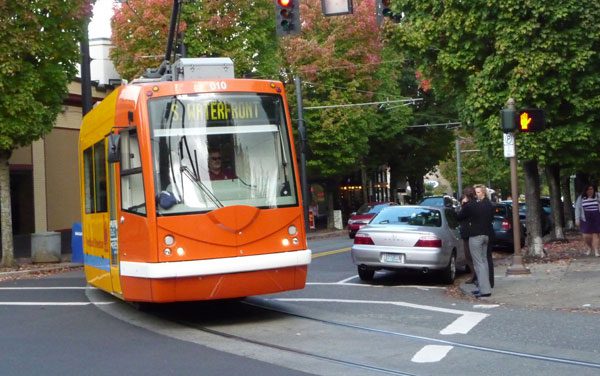Find true independence with streetcars, not freeways

A rare joy in Charlotte is being able to live a compact, transit-supported lifestyle, where soul-sapping commuter journeys on interstates or arterial highways can be avoided. My wife, Linda, and I have worked hard to craft such a lifestyle, “aging in place” in Dilworth, where almost everything we need is within a mile of our house and easily walkable, and our longest car trips each month might be to SouthPark mall or Costco, each about 5 miles.
Now that I work in UNC Charlotte’s new Center City Building, I can, if I organize my time, walk to the light rail station, catch the train and walk two blocks to my office. The reverse is true in the evening, perhaps stopping for a glass of wine on the way, either uptown or in South End. If I’m late I can always drive if I have to, and it’s an easy 1-mile commute.
I had begun to take this luxury of choice for granted, even to imagine it was normal. But of course it’s not, and occasionally I get shocked out of my complacency by taking the kind of drive that is normal for tens of thousands of Charlotteans, by driving on Independence Boulevard and other arterial highways in the city. I experience the regular insanity of our city’s development where work and home are far apart, and where shopping, schools and recreation are spread all over the map.
It’s a well-known argument that this pattern of city development is not sustainable, given the rampant uncertainties of energy prices and politics, let alone the looming threats of climate change. But the fact that this spread out, car-dependent life is embraced by millions of suburbanites masks the urgent necessity of change in transportation and land use policies.
My heart sank when I read about yet more millions being sunk into the doomed project of the Independence Boulevard freeway. Independence is a lost cause: It can never be widened or “improved” (a fine euphemism!) sufficiently to cope with future traffic if we maintain our expensive and inefficient commuting lifestyle. In the meantime all businesses along the route are shuttered, and land lies wasted for years.
Trying to integrate rapid bus or light rail transit into this corridor is a further waste of time and money. And I say this as a passionate advocate of transit … but in the right place, where it will improve property values and promote community life and economic development. The current Charlotte-Mecklenburg Southeast Corridor Rapid Transit Project, which is supposed to organize patterns of transportation and land use between Charlotte and Matthews, should be scrapped, or at the least fundamentally rethought.
A few years ago I brought Canadian urbanist Patrick Condon to work with my urban design students at UNC Charlotte. I should invite him back. His new book, Seven Rules for Sustainable Communities: Design strategies for a post-carbon world, should be required reading for all city council members, county commissioners, transportation officials and city staff involved in planning and economic development.
In a section most applicable to Charlotte, Condon castigates hub-and-spoke transit systems as too expensive, inefficient and not responsive to the real problems of U.S. cities, which, Condon argues, reside mainly along the innumerable commercial corridors in and out of all cities. Just think of South Boulevard, Albemarle Road, Independence Boulevard and all the neighborhoods that depend on them.
Condon promotes streetcar technology along such corridors, married with the creation of pedestrian friendly nodes of mixed-use residential and commercial development at frequent intervals. In those spots local businesses can thrive in a congenial environment, serviced by customers arriving on foot, by trams and by car. Modern-day Dilworths.
One could never imagine this environment along an Independence Freeway, which exists only to hasten commuters past businesses without stopping. Fortunately there is a radical yet practical solution to this dilemma: Run a streetcar down Monroe Road, from Seventh Street in the Elizabeth neighborhood out to downtown Matthews.
Forget light rail in the freeway median! Express buses and HOV lanes on Independence are sufficient for commuters who choose to live many miles from their work. Instead Charlotte should turn its energies and finances to creating new sustainable suburbs that attract people to a more active and less energy-dependent way of life.
I’m not alone in saying this. A study by the nonprofit Urban Land Institute earlier this year offered a similar vision. While some people made appreciative noises, the plan seems to have had little effect on policy. And now we get millions in taxpayer dollars spent building a freeway, with transit still planned for its medians.
When money is tight, streetcars can save substantially over light rail systems that need special rights-of-way and heavier infrastructure, and Condon is only the latest of a long line of North American urbanists urging a more flexible, cheaper transit infrastructure. Is anyone in Charlotte listening?
Views expressed in this commentary are those of the author and do not necessarily represent the views of the UNC Charlotte Urban Institute, its staff, or the University of North Carolina at Charlotte.